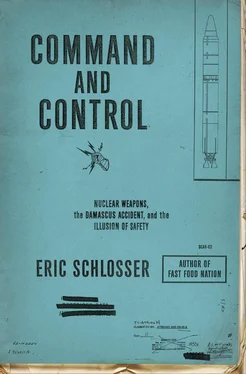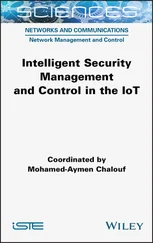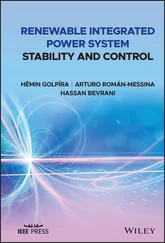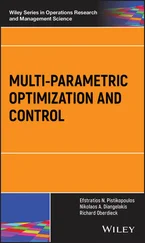The prospect of having to render safe a W-53 warhead didn’t make Arnold nervous. The core of the W-53 contained highly enriched uranium, not plutonium, largely eliminating the inhalation hazard and the risk of radioactive contamination. He’d visited Titan II launch complexes, practiced on dummy versions of the weapon. And at Indian Head, he’d been taught that nuclear weapons were almost impossible to detonate accidentally. The safety mechanisms had always worked, even during plane crashes and fires; the high explosives were said to pose the greatest threat to EOD teams. Arnold’s unit handled nuclear weapons all the time, and they rarely thought about the destructive force that could be unleashed. EOD technicians sat on nuclear weapons, casually leaned against them, used them as tables during lunch breaks. But one of Arnold’s commanders was too cocky and nonchalant. He once removed a dummy weapon from a storage bunker in broad daylight, put it into the back of his pickup truck, covered it with a tarp, drove right past security, and disassembled it in front of his girlfriend. Arnold thought the move was stupid and irresponsible, as well as a major breach of security. Inside the bunker, the dummy weapons were stored beside the real ones.
• • •
THE RECONNAISSANCE TEAM LEFT the access control point just after sunrise. The search for the warhead didn’t take long. Richard English led them to a spot, about two hundred yards east of the silo, where he thought he’d seen the weapon’s outline in the dark. And there it was, lying in a shallow ditch, right next to the access road. The pickup trucks driving back and forth after the accident, the men stumbling in the darkness, had passed within a few feet of it.
Alpha radiation was detected directly on top of the weapon, but nowhere else on the complex.
The ensuing conversation between Air Force personnel at the site and the Little Rock command post could be overheard by anyone with a shortwave radio:
“It’s laying in a ditch beside, you know, it’s not even up close. It blew out. It’s laying in a ditch. It’s all exposed, and all we need to do is go in and get it.”
“Okay, I’d recommend that we wait for those people that are going to arrive in about an hour.”
“Fine with me.”
• • •
IN A HOT SPRINGS HOTEL ROOM, Senator David Pryor and Vice President Walter Mondale were briefed on the Titan II accident. The Democratic Party’s state convention began later that morning, and the vice president was scheduled to give the opening speech. Reporters would be asking questions about the accident, and Mondale wanted to be prepared. Three SAC officers who’d come from Little Rock described the dropping of the socket, the piercing of the missile’s skin, the long wait through the night, the futile attempt to reenter the control center, the explosion. But they refused to disclose whether the Titan II had been carrying a warhead. SAC headquarters had instructed them neither to confirm nor deny the presence of a nuclear weapon.
Mondale picked up the phone and called the secretary of defense, Harold Brown — who wouldn’t tell him, either.
“Goddamn it, Harold, I’m the vice president of the United States,” Mondale said.
Brown told him the missile had a nuclear warhead.
• • •
BEFORE TAKING A HELICOPTER to the launch complex, Bob Peurifoy and the rest of the Accident Response Group met with SAC officials at Little Rock Air Force Base. General James E. Light, Jr., had already seen the warhead. Light was the deputy chief of staff for logistics at SAC headquarters. He’d flown to Arkansas, taken a chopper to the accident site, inspected the damage, and returned to the Little Rock command post for this meeting. Light said that the reentry vehicle was remarkably intact, given the size of the explosion.
Peurifoy didn’t like hearing that bit of information. The W-53’s arming and fuzing system, along with its batteries, were attached to the base of the reentry vehicle. And if they were intact, the weapon still had the potential to detonate.
General Light also said that the EOD unit from Barksdale had arrived at the scene, dug a hole under the warhead, wrapped a chain around it, and planned to yank it out of the ditch. But Light had told them not to do anything until the scientists from Los Alamos and Sandia gave their approval.
Peurifoy and William Chambers, who was representing Los Alamos, knew right away that they’d like General Light. He’d made the correct decision. The Air Force was eager to get the weapon out of that ditch as quickly as possible. A crowd of journalists had assembled near the access road on Highway 65, and a small plane carrying a photographer had already flown over the launch complex. But Peurifoy and Chambers thought there was no need to rush the dismantling of America’s most powerful thermonuclear warhead. Chambers knew a fair amount about the subject. He’d responded to the Broken Arrow at Palomares, advised the recovery effort at Thule, written EOD manuals for nuclear weapons, and helped to create the Nuclear Emergency Search Team (NEST), a secretive group that handled threats of nuclear terrorism within the United States. None of the work at Los Alamos and NEST had made Chambers feel anxious — not the weapon accidents, not the ransom note warning of a 20-kiloton bomb in Manhattan, not the warning of a terrorist attack on America’s bicentennial celebrations in 1976. He’d served with General George S. Patton’s Third Army during the Second World War, and the genuine horrors that he saw on the battlefield tempered his fear of hypothetical ones.
From the air, the launch complex looked like it had been hit by a bomb. The Accident Response Group traveled to the site by helicopter, and Peurifoy wondered about the condition of the warhead’s electrical system, his area of expertise. The moment he saw the weapon, Peurifoy thought: Well, my job here is done. General Light had used the wrong term to describe what was lying in the ditch. The “reentry vehicle” wasn’t intact — it was gone, nowhere to be seen, no doubt blown to pieces by the explosion. The warhead lay there by itself, stripped of the electrical power source necessary for a nuclear detonation. But that W-53 was looking pretty good, considering what it had been through. It was still, essentially, in one piece. The outer cover of the primary had been torn off — you could see the detonator cables, the high explosives, the tubing, wiring, capacitors. And the secondary was loose; it no longer sat directly below the primary, like a metal garbage can under a silver basketball. The damage was impressively slight, however, for an object that had flown through a fireball, climbed more than a thousand feet into the air, and hit the ground without a parachute.
Chambers walked over to a nearby Pettibone crane, a mobile all-terrain vehicle that was ready to lift the weapon from the ditch, and drained hydraulic fluid from it. He poured the oil into the holes and cracks of the warhead, coating the high explosives and making them less likely to be set off by a random spark — the kind of spark that might be generated by a chain wrapped around the metal casing of a nuclear warhead. Chambers wanted to know exactly what had happened inside the warhead before anyone tried to move it or take it apart. An X-ray would reveal the amount of damage, but the Accident Response Group hadn’t brought a portable X-ray unit to Arkansas. Until the damage could be properly assessed, Chambers said that nothing should be done. The Air Force had suffered enough embarrassment already. Another accident with this weapon could kill people and spread radioactive tritium, with a pack of journalists literally down the road.
When Matthew Arnold heard about the decision to do nothing until the weapon was X-rayed, he thought it was ridiculous. It was bullshit. It meant his unit would have to sit around in Arkansas for at least another day or two. These civilians don’t know what they’re talking about, he thought. They’re being overly cautious. The warhead doesn’t look that bad, and the render safe procedures wouldn’t be complicated. They were right out of the book.
Читать дальше












